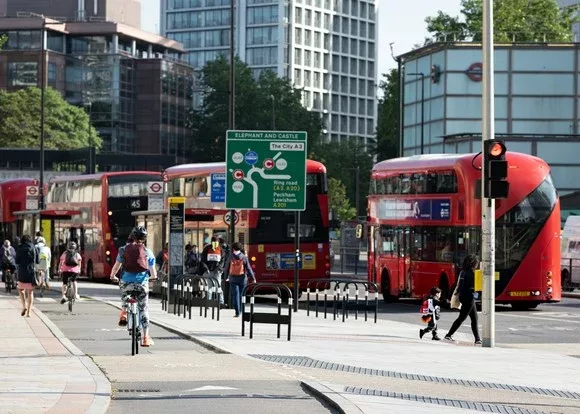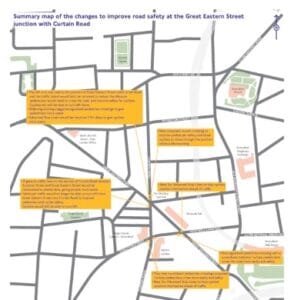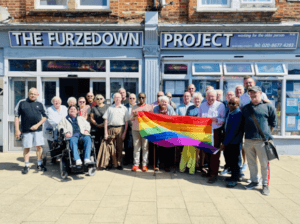Transport for London has published casualty statistics that show the number of people killed on London’s roads in 2021 fell by 22% to the lowest level on record, compared to a seven per cent increase nationally.
Despite this decrease, overall casualties have increased since the coronavirus lockdowns ended and traffic has returned, and continued action is needed to achieve the Mayor’s Vision Zero goal of eliminating death and serious injury from the transport network.
It says that whilst travel habits continued to change in 2021, the lifting of most pandemic restrictions in July 2021 saw a gradual return to normal activity. As traffic returned to pre-pandemic levels, the number of people who were killed or seriously injured increased by 17%, rising from 3,070 in 2020 to 3,580 in 2021.
“The devastating consequences for the families, friends and communities impacted by these deaths and life-changing injuries is immense and collective action is needed to achieve the Mayor’s Vision Zero goal of eliminating death and serious injury from London’s streets by 2041,” TfL says in a statement. “This week is Vision Zero week, with TfL, the Metropolitan Police, London boroughs and the Mayor working together to highlight the problem of road danger and the trauma caused by collisions, and generate awareness of Vision Zero across all Londoners.”
Vulnerable road users continue to be most at risk with people walking, cycling and motorcycling making up 81 per cent of all people killed or seriously injured in 2021. The number of people killed while cycling in 2021 was down by 40 per cent on the 2005-09 baseline, from 17 to 10 people. However, serious injuries to people cycling increased by 54 per cent. This partly reflects increases in the number of journeys cycled, with the most recent figures showing the share of road journeys by bicycle almost doubling to four per cent.
Since the start of the pandemic, TfL says it has worked closely with boroughs across the capital to invest in the walking and cycling infrastructure needed to enable increases in active travel and keep people walking and cycling safe. This includes more than 100km of new or upgraded cycle lanes, 89 Low Traffic Neighbourhoods, and 322 ‘School Streets’. By autumn 2021, 19.4% of Londoners lived within 400 metres of a cycle route, an increase of approximately 750,000 residents since 2019.
People riding motorcycles continued to be disproportionately involved in collisions resulting in fatal and serious injuries to themselves and to others, especially people walking. In 2021, motorcyclists accounted for less than three per cent of vehicle kilometres travelled but 19 per cent of fatalities. The greatest absolute increase in serious injuries was recorded amongst motorcyclists, notably smaller capacity motorcycles of 125cc or below. The pivot to online shopping and the growth of the food delivery economy has contributed to an increase in new small motorcycle registrations, with more people riding for work. TfL has been working closely with delivery, courier and servicing companies to drive down these devastating incidents and help ensure riders watch out for each other and everyone else on London’s streets.
Cars continued to be the main vehicle type involved in collisions in 2021, highlighting the risks posed to Londoners and the capital by a car-led recovery from the pandemic. Cars were involved in 64 per cent of all collisions resulting in death or injury, up from 62% in 2019. Speeding remains the biggest risk to road users with half of the 2021 fatal collisions in London (37 out of 75) reporting speed as a contributory factor. TfL has been working with the Met to increase the level of police enforcement and tackle speeding and the harm it causes, with the aim of having the capacity to enforce up to one million speeding offences by 2024/25. In 2021/2022, the Met enforced 476,685 speeding offences, 199,105 more than in the previous year and an increase of 72%.
TfL says a shift away from private vehicles to walking, cycling and public transport will significantly help to reduce Londoners’ exposure to road danger and get the city closer to its Vision Zero goal, while also helping to reduce congestion and carbon emissions, and improve London’s air quality. Creating safer and more attractive areas for people to live, work and play will also encourage more people out of their cars to walk, cycle and use public transport, and enjoy the health benefits of active travel.
The number of people killed or seriously injured in or by a bus in 2021 was the second lowest number on record after 2020 and is 70% down on the 2005-09 baseline, meeting the overall target of 70% by 2022. TfL has continued work on its Bus Safety Programme and all new buses joining the fleet are now Bus Safety Standard 2019 compliant. This means they are fitted with Intelligent Speed Assistance, which ensures that buses are complying with the speed limit. They are also fitted with blind spot mirrors or camera monitoring systems to improve visibility of vulnerable road users and with acoustic vehicle alerting systems to alert road users of their presence. TfL is continuing the roll out of the Bus Safety Standard on new vehicles, with all existing measures mandated by 2024.
(Picture – TfL)




























